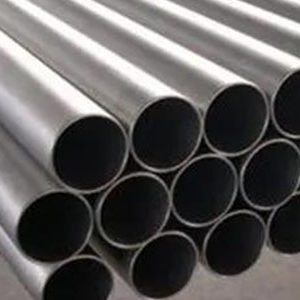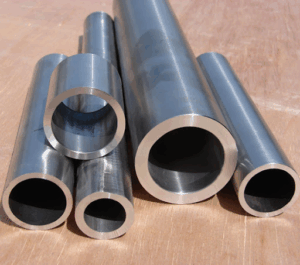Unveiling the Marvels of 316/316L Stainless Steel: A Comprehensive Exploration
Introduction
In the expansive landscape of metallurgy, certain alloys shine as beacons of innovation and engineering excellence. One such marvel is 316/316L Stainless Steel, renowned for its exceptional corrosion resistance, durability, and versatility. Join us on a journey to uncover the intricacies and advantages of this remarkable alloy, exploring its composition, properties, applications, suppliers, pricing, and expert insights.
Overview of 316/316L Stainless Steel
316/316L Stainless Steel belongs to the family of austenitic stainless steels, distinguished by their high corrosion resistance and excellent mechanical properties. Let’s delve into the key details of this alloy:
Chemical Composition
| Element | Percentage |
|---|---|
| Carbon (C) | 0.08% max |
| Silicon (Si) | 0.75% max |
| Manganese (Mn) | 2.00% max |
| Phosphorus (P) | 0.045% max |
| Sulfur (S) | 0.030% max |
| Chromium (Cr) | 16.0-18.0% |
| Nickel (Ni) | 10.0-14.0% |
| Molybdenum (Mo) | 2.0-3.0% |
Mechanical Properties
- Tensile Strength: 515-690 MPa
- Yield Strength: ≥ 205 MPa
- Elongation: ≥ 40%
- Hardness (Brinell): ≤ 217 HBW
Standards
- ASTM A240: Standard Specification for Chromium and Chromium-Nickel Stainless Steel Plate, Sheet, and Strip for Pressure Vessels and for General Applications
- ASTM A276: Standard Specification for Stainless Steel Bars and Shapes
Exploring the Features and Advantages
316/316L Stainless Steel boasts a myriad of features and advantages that render it a preferred choice in various applications:
Features
- Excellent corrosion resistance in a wide range of environments, including acidic and alkaline conditions
- Good formability and weldability, allowing for easy fabrication
- High-temperature resistance, suitable for elevated temperature applications
- Superior surface finish, making it ideal for decorative purposes
- Non-magnetic in the annealed condition
Advantages
- Widely used in food processing, chemical processing, and architectural applications due to its hygiene and aesthetic appeal
- Offers excellent resistance to oxidation and intergranular corrosion, ensuring long-term durability
- Versatile and cost-effective compared to other stainless steel grades
- Available in various forms such as sheets, plates, bars, and tubes to meet diverse requirements
- Can be easily cleaned and maintained, retaining its appearance for extended periods
Comparison Between 316/316L Stainless Steel and Competing Alloys
Let’s compare the advantages and disadvantages of 316/316L Stainless Steel with a competing alloy, 304/304L Stainless Steel:
| Parameter | 316/316L Stainless Steel | 304/304L Stainless Steel |
|---|---|---|
| Corrosion Resistance | Excellent | Excellent |
| Molybdenum Content | 2.0-3.0% | 0% |
| Cost | Higher | Lower |
| Formability | Good | Good |
Applications and Uses
From food processing to architectural design, 316/316L Stainless Steel finds extensive utilization across diverse industries:
| Industry | Applications |
|---|---|
| Food Processing | Equipment, utensils, food handling and storage |
| Chemical Processing | Tanks, piping, valves, heat exchangers |
| Architectural | Handrails, facades, decorative elements |
| Medical | Surgical instruments, medical devices |
Navigating Suppliers and Pricing
Sourcing 316/316L Stainless Steel requires careful consideration of reliable suppliers offering quality products at competitive prices:
| Supplier | Price Range (per kg) | Description/Notes |
|---|---|---|
| Thyssenkrupp | $2.50 – $4.00 | Leading global supplier of stainless steel, offering high-quality products. |
| Outokumpu | $2.80 – $4.50 | Renowned manufacturer of stainless steel solutions for various industrial sectors. |
| POSCO | $2.20 – $3.80 | Global steel giant providing a wide range of stainless steel products with global distribution. |
FAQs about 316/316L Stainless Steel
Q: How is 316/316L Stainless Steel produced?
A: This stainless steel is typically produced through processes such as electric arc furnace melting, refining, and continuous casting, followed by hot rolling and annealing.
Q: What are the main advantages of using 316/316L Stainless Steel?
A: 316/316L Stainless Steel offers excellent corrosion resistance, formability, and weldability, making it suitable for a wide range of applications in various industries.
Q: What are the common applications of 316/316L Stainless Steel?
A: This stainless steel is commonly used in food processing equipment, chemical processing tanks, architectural elements, and medical instruments.
Q: Where can I buy 316/316L Stainless Steel?
A: You can source it from reputable suppliers such as Thyssenkrupp, Outokumpu, POSCO, and others.
Q: What specifications does 316/316L Stainless Steel conform to?
A: This stainless steel conforms to standards such as ASTM A240 and ASTM A276, ensuring compliance with stringent quality requirements.





